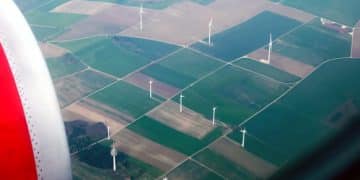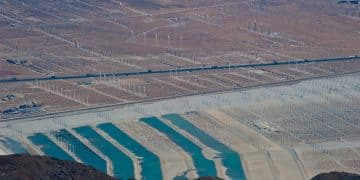Clean Air Act Changes: Impact on US Coal-Fired Power Plants
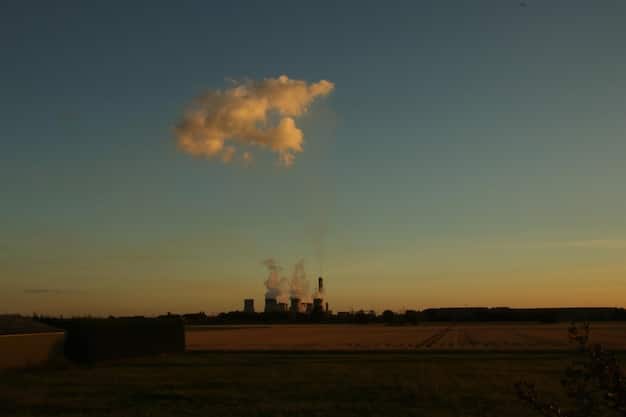
The proposed changes to the Clean Air Act are set to impose stricter regulations on emissions, potentially leading to significant operational and economic challenges for coal-fired power plants in the US.
The proposed changes to the Clean Air Act and their potential impact on coal-fired power plants in the US are generating considerable debate. These changes could reshape the energy landscape, placing additional pressures on an already challenged sector.
Understanding the Clean Air Act and Its Evolution
The Clean Air Act (CAA) is a comprehensive federal law that regulates air emissions from stationary and mobile sources. Enacted in 1970 and amended several times since, the CAA aims to protect public health and the environment by setting limits on air pollutants.
The evolution of the Clean Air Act reflects growing scientific understanding of air pollution’s impacts. Early versions focused on criteria pollutants like ozone, particulate matter, and sulfur dioxide. Subsequent amendments have addressed acid rain, stratospheric ozone depletion, and air toxics.
Key Provisions of the Clean Air Act
Several key provisions of the CAA are particularly relevant to coal-fired power plants. These include:
- National Ambient Air Quality Standards (NAAQS): These standards set limits for criteria pollutants to protect public health and welfare.
- New Source Review (NSR): This requires new or modified major sources of air pollution to obtain permits and install the best available control technology (BACT).
- Title IV (Acid Rain Program): This established a cap-and-trade system for sulfur dioxide emissions from power plants to reduce acid rain.
- Mercury and Air Toxics Standards (MATS): These standards regulate emissions of mercury, arsenic, and other hazardous air pollutants from power plants.
These provisions have significantly impacted the operation and emissions of coal-fired power plants, driving the adoption of pollution control technologies and influencing plant closures.
In summary, the Clean Air Act has undergone significant evolution, addressing various pollutants and environmental concerns. Its key provisions impose obligations on coal-fired power plants, necessitating the adoption of advanced pollution control measures.
Proposed Changes to the Clean Air Act: An Overview
Several proposed changes to the Clean Air Act are under consideration, driven by evolving scientific understanding and policy goals. These changes aim to further reduce air pollution and address climate change, impacting various sectors including coal-fired power plants.
The proposed changes span a range of areas, including tighter emission standards, expanded monitoring requirements, and increased enforcement actions. These could result in stricter compliance obligations for coal-fired power plants.
Specific Proposed Changes
Here are some of the specific proposed changes to the Clean Air Act:
- Stricter NAAQS for Particulate Matter: Lowering the acceptable levels of fine particulate matter (PM2.5) could require additional emission controls at coal-fired power plants.
- Expanded Definition of “Major Source”: Broadening the definition of what constitutes a “major source” could subject more plants to NSR requirements.
- Increased Monitoring and Reporting: Requiring more comprehensive monitoring and reporting of emissions could enhance transparency and accountability.
These changes could significantly increase the compliance costs and operational challenges for coal-fired power plants.
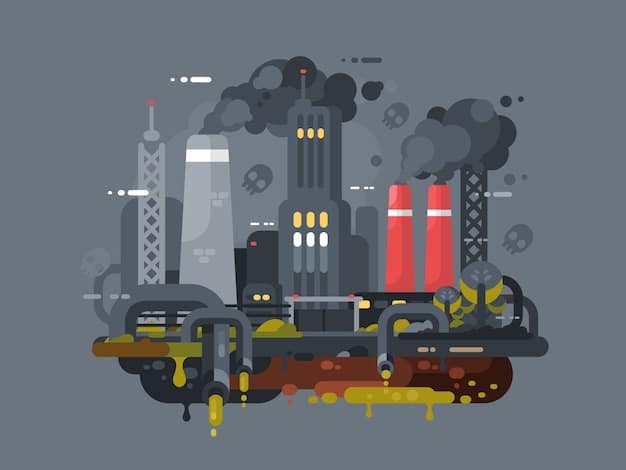
In conclusion, the proposed changes to the Clean Air Act encompass stricter emission standards, broader applicability, and increased monitoring, intensifying the regulatory pressures on coal-fired power plants.
Potential Impacts on Coal-Fired Power Plants
The proposed changes to the Clean Air Act could have profound impacts on coal-fired power plants in the US. These impacts span economic, operational, and environmental dimensions, potentially reshaping the future of this sector.
The increased compliance costs associated with stricter regulations could accelerate the retirement of older, less efficient plants. This could also lead to shifts in the energy market, with increased reliance on renewable energy sources.
Economic Impacts
The economic impacts on coal-fired power plants could be significant. These include:
- Increased Compliance Costs: Installing and operating advanced pollution control technologies can be expensive.
- Plant Retirements: Older plants may become uneconomical to operate under stricter regulations, leading to closures.
- Stranded Assets: Coal reserves and power plant infrastructure could become stranded assets if the plants are forced to close prematurely.
These economic challenges could disproportionately affect communities that rely on coal for jobs and revenue.
In sum, the proposed changes to the Clean Air Act could lead to increased compliance costs, plant retirements, and stranded assets, creating economic challenges for coal-dependent communities.
Technological Solutions for Compliance
Coal-fired power plants have several technological options available to comply with the proposed changes to the Clean Air Act. These solutions range from upgrading existing pollution control equipment to adopting new and innovative technologies.
Investing in these technologies can help plants reduce emissions and maintain compliance, extending their operational life and reducing their environmental impact.
Available Technologies
Here are some of the technological solutions available to coal-fired power plants:
- Flue Gas Desulfurization (FGD): Also known as scrubbers, FGD systems remove sulfur dioxide (SO2) from flue gas.
- Selective Catalytic Reduction (SCR): SCR systems reduce nitrogen oxide (NOx) emissions using a catalyst.
- Activated Carbon Injection (ACI): ACI systems remove mercury emissions by injecting activated carbon into the flue gas.
- Fabric Filters (Baghouses): Baghouses capture particulate matter (PM) from flue gas using filtration.
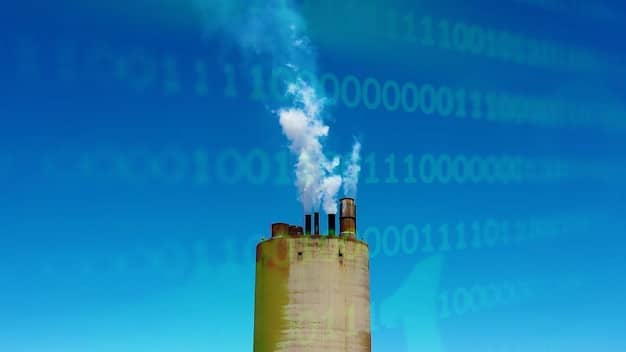
Adopting these technologies can significantly reduce emissions and help coal-fired power plants comply with the proposed changes to the Clean Air Act.
The Role of Renewable Energy
As coal-fired power plants face increasing regulatory pressures, renewable energy sources are playing an increasingly important role in the US energy mix. The growth of renewable energy offers an alternative to coal and can help reduce overall air pollution and carbon emissions.
Renewable energy sources such as solar, wind, and hydropower are becoming more cost-competitive and reliable, making them an attractive option for utilities and consumers.
Benefits of Renewable Energy
The benefits of renewable energy are multifaceted:
- Reduced Air Pollution: Renewable energy sources produce little to no air pollution, improving air quality and public health.
- Reduced Carbon Emissions: Renewable energy sources do not emit greenhouse gases, helping to mitigate climate change.
- Energy Independence: Renewable energy sources can reduce reliance on fossil fuels, enhancing energy security.
The transition to renewable energy is essential for a cleaner and more sustainable energy future.
In summary, renewable energy offers a cleaner and more sustainable alternative to coal, reducing air pollution, carbon emissions, and reliance on fossil fuels.
Policy and Legal Challenges
The proposed changes to the Clean Air Act are likely to face policy and legal challenges. Stakeholders, including industry groups, environmental organizations, and state governments, may raise concerns about the economic impacts, technological feasibility, and legal authority of the proposed changes.
These challenges could lead to delays in implementation and potentially alter the final form of the regulations.
Potential Challenges
- Legal Challenges: Industry groups may challenge the legal authority of the EPA to implement certain aspects of the proposed changes.
- Policy Debates: Policymakers may debate the economic impacts of the proposed changes, particularly on coal-dependent communities.
- Implementation Hurdles: States may face challenges in implementing and enforcing the new regulations.
These challenges could shape the ultimate outcome of the proposed changes to the Clean Air Act.
In closing, the proposed changes to the Clean Air Act face potential policy and legal challenges that could influence their implementation and effectiveness.
| Key Point | Brief Description |
|---|---|
| 🌱 Stricter Emission Standards | The proposed changes will likely enforce lower permissible emission levels for pollutants. |
| 💰 Compliance Costs | Coal-fired power plants may face higher expenses due to upgrades and new technologies. |
| ☀️ Renewable Transition | The shift encourages a move towards cleaner, renewable energy sources like solar and wind. |
| ⚖️ Policy Challenges | Expect legal and policy obstacles due to economic impacts and technological concerns. |
Frequently Asked Questions (FAQ)
▼
The primary objective is to further reduce air pollution and mitigate climate change by imposing stricter regulations on emissions from various sources, including coal-fired power plants.
▼
Stricter emission standards could require coal-fired power plants to invest in advanced pollution control technologies or face potential plant closures due to non-compliance.
▼
Technological solutions include Flue Gas Desulfurization (FGD) systems, Selective Catalytic Reduction (SCR) systems, Activated Carbon Injection (ACI) systems, and Fabric Filters (Baghouses).
▼
Renewable energy sources offer a cleaner alternative to coal, helping to reduce air pollution and carbon emissions, aligning with the goals of the Clean Air Act and broader environmental policies.
▼
Expect legal battles and policy debates focusing on the economic impacts, technological feasibility, and the EPA’s legal authority to implement the proposed changes, especially concerning coal-dependent communities.
Conclusion
The proposed changes to the Clean Air Act present both challenges and opportunities for coal-fired power plants in the US. Navigating this evolving regulatory landscape will require strategic investments, technological innovation, and a commitment to cleaner energy solutions.
